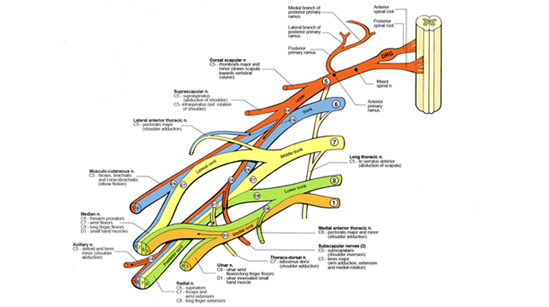|
Biceps Tendon Lengthening Surgery FAQ
- What are the causes of a biceps contracture?
- Can a biceps contracture be permanently corrected non-surgically?
- Under what specific circumstances and at what age do you recommend a biceps tendon lengthening procedure?
- What are the short-term and long term benefits of having this procedure?
- What are the short-term and long-term risks of having this procedure? Has a child ever lost biceps function due to this procedure?
- What kind of problems would occur over time if we decided not to have this recommended surgery done?
Under what circumstances would the contracture return? And if it did return, what would you recommend?
- Exactly what are you looking for when you evaluate a child for this? How does it present itself on a video?
- How long does the surgery take?
- How is the child immobilized after the surgery and for how long?
Are there any restrictions in the post-op phase?
- What are the restrictions for the year following the surgery?
- What kind of therapy will we need to do following this surgery? Will we have to do a dynamic brace or electrical stimulation or any other modality and if so, for how long?
- How long will it take for the biceps to regain it's original strength after the surgery? Will all of the original strength return or will there be a temporary or permanent decrease in strength because of the surgery?
What are the causes of a biceps contracture? back to top
Like all muscle contractures, biceps contracture is a result of a muscular imbalance. In the case of biceps contracture, triceps strength is considerably weaker causing a characteristic bending and rigidity of the elbow joint.
Can a biceps contracture be permanently corrected non-surgically? Therapy, Myofascial Release, Electrical Stimulation, Serial Casting, special medicine, Dynamic Splinting? back to top
Biceps contracture cannot be permanently corrected non-surgically. However, milder cases of biceps contracture can benefit from the above treatments.
Under what specific circumstances and at what age do you recommend a biceps tendon lengthening procedure? back to top
Biceps lengthening is performed from 4 years of age into adulthood and is recommended as treatment for muscular imbalance about the arm resulting in rigidity of the elbow joint.
What are the short-term and long term benefits of having this procedure? back to top
Improved length, function and growth are associated with biceps lengthening.
What are the short-term and long-term risks of having this procedure? Has a child ever lost biceps function due to this procedure? back to top
Weakness of the biceps is both a short-term and long-term risk associated with biceps lengthening. None of the children that Dr. Nath has performed biceps lengthening on has lost biceps function.
What kind of problems would occur over time if we decided not to have this recommended surgery done? back to top
Progressive loss of extension and concomitant bony deformity of the elbow are results of persistent biceps contracture. Growth and development are impaired by long-term contracture of the biceps.
Under what circumstances would the contracture return? If it did return, what would you recommend? back to top
Biceps contracture can recur after a growth spurt and requires initial splinting and possible surgery depending on the degree of contracture.
Exactly what are you looking for when you evaluate a child for this? How does it present itself on a video? back to top
Biceps contracture presents with characteristic inability to straighten the elbow (joint rigidity).
How long does the surgery take? back to top
This surgery is a one-hour procedure. Patients stay for one night in the hospital to ensure proper splinting and positioning of the arm.
How is the child immobilized after the surgery and for how long?
back to top
The child is immobilized in an elbow extension splint full-time for 3 months.
Are there any restrictions in the post-op phase? back to top
Following the initial 3 month full-time immobilization period, the splint should be worn only at nighttime for additional 3 months. Heavy weight-bearing exercises should be avoided for the first 6 months following the procedure.
What are the restrictions for the year following the surgery? back to top
After six months normal weight-bearing exercises and activity can resume.
What kind of therapy will we need to do following this surgery? Will we have to do a dynamic brace or electrical stimulation or any other modality and if so, for how long?
back to top
Range of motion exercises must be performed to relieve stiffness of the shoulder, elbow and wrist. Electrical stimulation every other day is recommended for strengthening.
How long will it take for the biceps to regain it's original strength after the surgery? Will all of the original strength return or will there be a temporary or permanent decrease in strength because of the surgery?
back to top
Biceps strength should be regained within 6 months following surgery. Initial temporary weakness is common following this procedure.
|
















